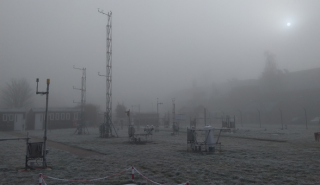Atmosphere Charged as Fog Alerts Emerge from Gloomy Forecast
A foggy day in London town just got even more predictable.
Scientists have discovered how to increase early warnings for fog, from around half an hour to up to two hours before it happens, by detecting changes in the atmospheric electric field.
The extra early notice could be enough to help transport planners and emergency services to change schedules or issue travel advice to smooth out the many disruptions caused by fog.
Lead researcher Caleb Miller, from the University of Reading, said: “Fog can cause disruption to airports and make driving conditions dangerous by decreasing visibility, but it is also still incredibly difficult to forecast ahead of time.
“Up to now, forecasters have struggled to predict precisely when and where fog may form.
“Our work has shown that, by observing the electrical properties of the air, which begin to change before the fog forms, we have a tool that’s able to give predictions of fog over two hours in advance, which improves on previous methods in the same situations.”
By using such measurements in quickfire weather alerts, known as ‘nowcasts’, forecasters could give operators of services such as airports more warning that fog is on the way.
Inland fog forms in the UK when relative humidity is high, temperatures are low, and the wind is very light. Building on research that showed a role for electric charge in cloud and fog formation, scientists at the University of Reading’s Department of Meteorology explored two decades of weather records from the Reading University Atmospheric Observatory.
They found links between a range of conditions and the observation of “a foggy day” in official daily records, crucially finding the link between the air’s electric field changing and the fog onset several hours later.
Professor Giles Harrison, a co-author of the new study, said: “More than 160 years ago, the great Victorian scientist Lord Kelvin said he expected the atmospheric electrometer would be used as ‘a weather-glass’. It has taken some time, but, for fog at least, we can see that Lord Kelvin was right.”
The research is published in the Quarterly Journal of the Royal Meteorological Society.

